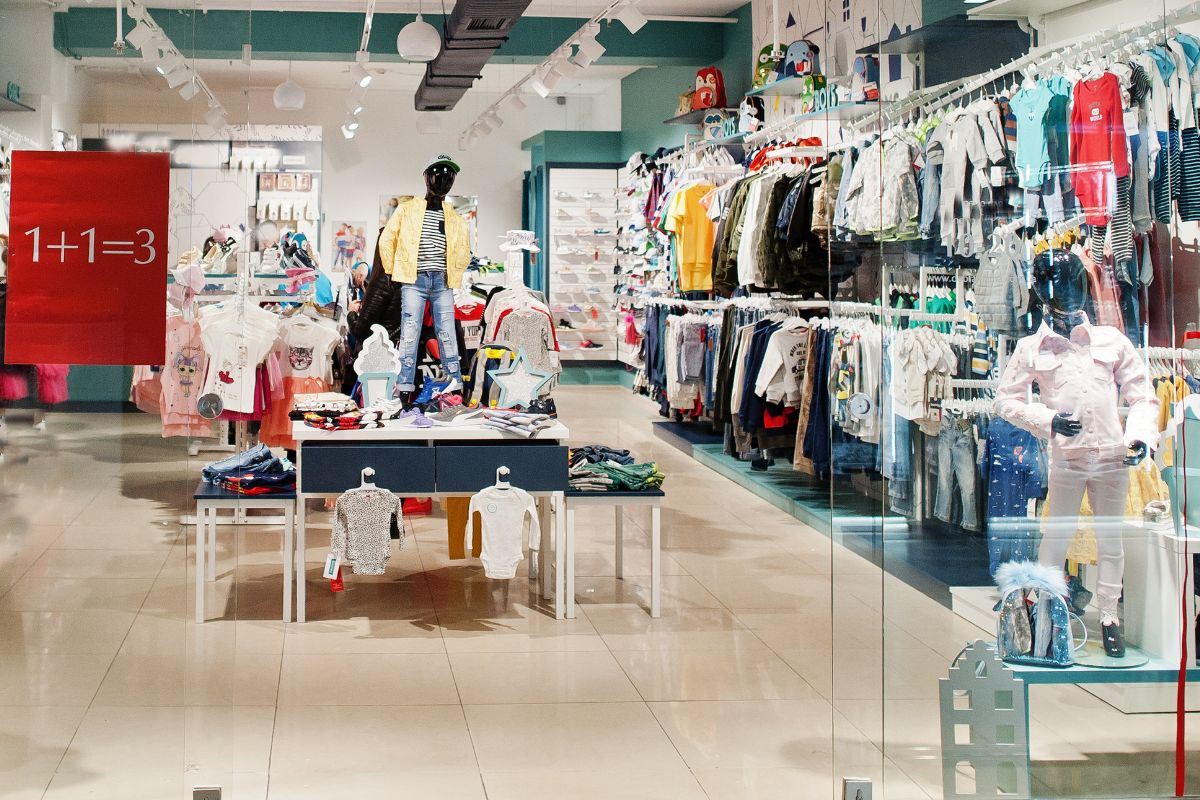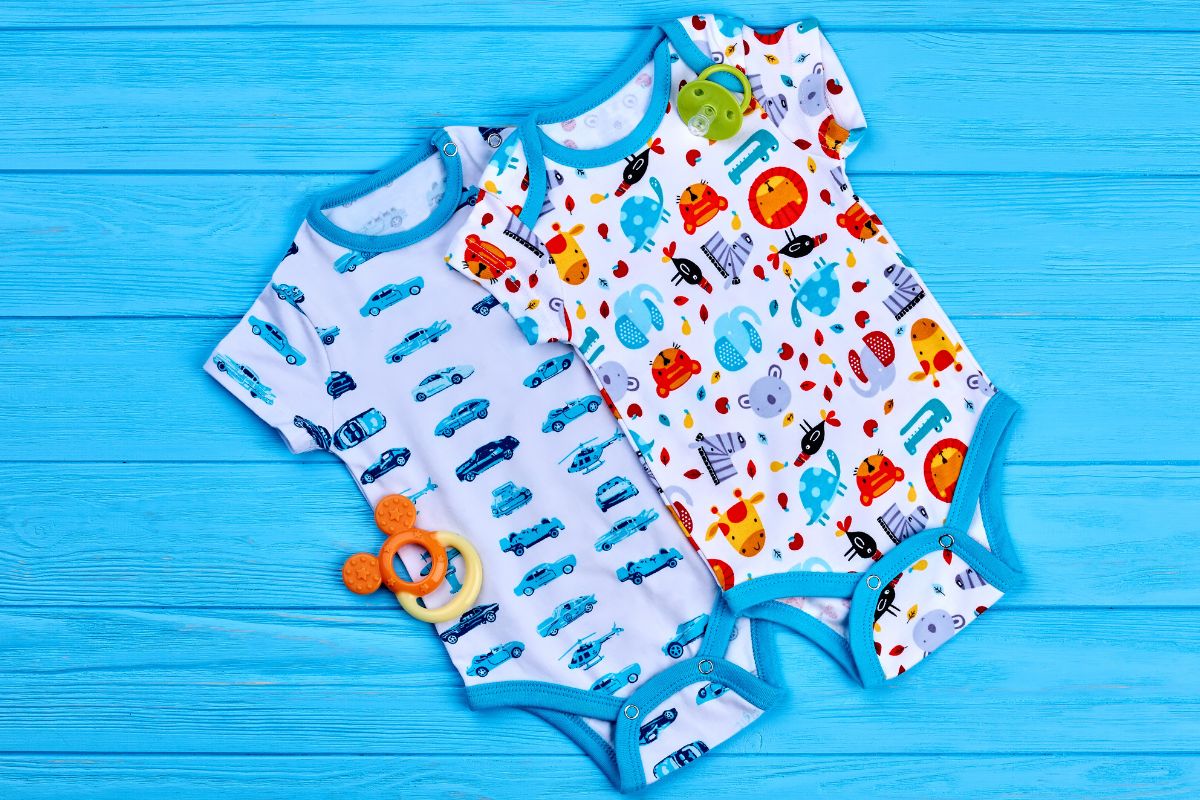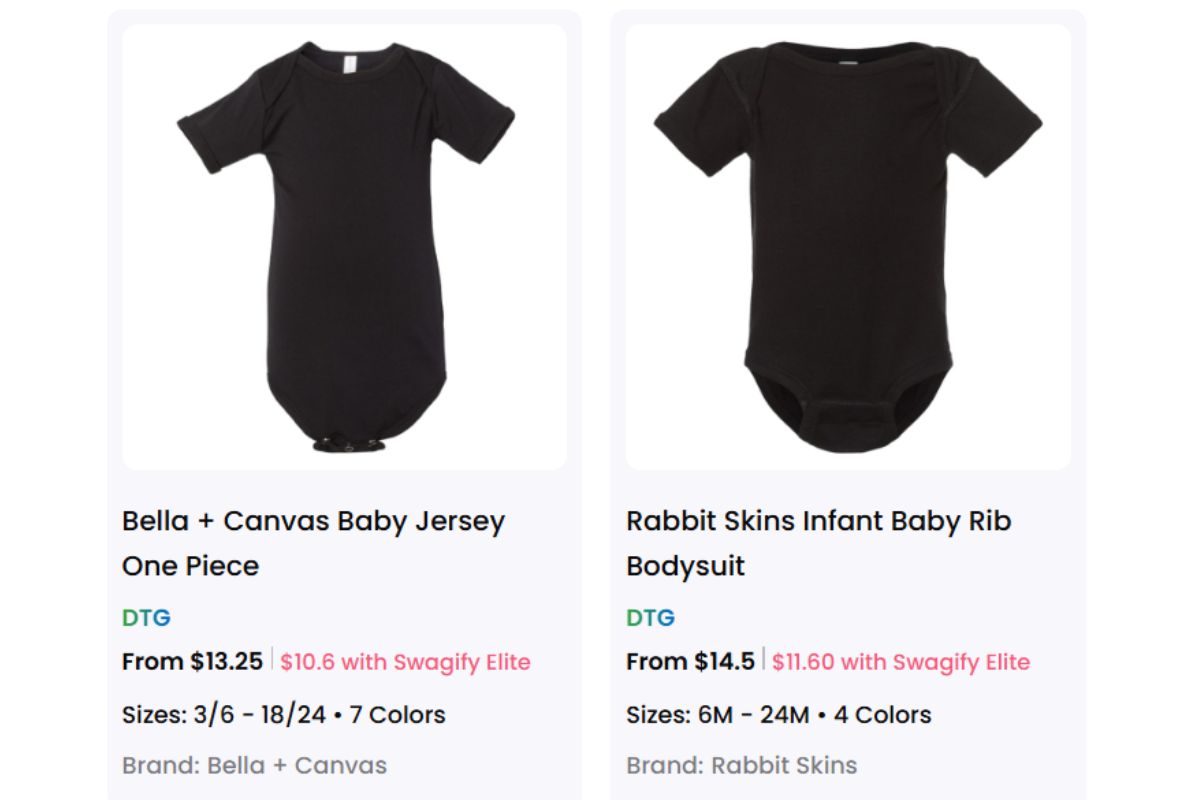Starting a baby clothing line can be an exciting journey for creative entrepreneurs. You have the chance to design products that meet the needs of new parents and their little ones.To succeed in this venture, you must understand the market, create a solid business plan, and build a strong brand.
Research is key when entering the baby clothing industry. Analyze consumer trends and preferences to ensure your designs stand out.
Table of contents
- Understanding the Baby Clothing Market
- Analyzing the Competition and Demand
- Crafting a Comprehensive Business Plan
- Selecting the Right Business Structure
- Developing a Baby Clothing Brand Identity
- Product Development and Manufacturing
- Funding the Business
- Setting Up Operations
- Establishing Online and Offline Retail Presence
- Licensing, Permits, and Legal Compliance
- Marketing, Advertising, and Customer Outreach
- Planning for Growth and Expansion
- Frequently Asked Questions
- What are the initial steps to establishing an online baby clothing business?
- Can you detail the financial investment required to launch a baby clothing line?
- What strategies are effective for sourcing garments for a baby boutique?
- How do you collaborate with manufacturers to create a baby clothing line?
- What factors contribute to the profitability of a baby clothing business?
- What are the key considerations when designing and producing children’s apparel?
By focusing on quality materials and stylish options, you can attract customers who want the best for their babies.
Once you’ve developed your ideas, consider the logistics of running a business. This includes choosing a legal structure, setting up an online store, and planning your inventory.
Each of these steps will play a central role in establishing a successful baby clothing line that can grow and thrive in today’s market.
Understanding the Baby Clothing Market
To succeed in the baby clothing line, you need to grasp the baby clothing industry. This involves knowing current trends and understanding what buyers want.
Market Research
Start with market research. Gather data on demographics to identify your target audience. This includes age, income, and location of parents purchasing baby clothes.
Baby Clothing Trends
Keep an eye on baby clothing trends. Popular items often include organic fabrics, trendy designs, and functional features. Understanding these trends helps you create products that appeal to modern parents.
Key Insights:
- Parents are increasingly looking for sustainable options.
- Comfort and style are top priorities for baby clothing.
- Bright colors and playful patterns attract attention.
Make sure to analyze your competition. Look at successful brands and learn from their strategies. See what products are selling well and where you can fill gaps in the market.
Feeling confident in your market knowledge will guide your designs and marketing efforts. This understanding is crucial for establishing a successful baby clothing line.
Analyzing the Competition and Demand
| Step | Details |
|---|---|
| 1. Research the Market | Identify trends, target audience, and competitors in the baby clothing industry. |
| 2. Define Your Niche | Choose a specialty like organic fabrics, gender-neutral clothing, or themed outfits. |
| 3. Develop a Business Plan | Outline costs, suppliers, pricing strategy, and marketing approach. |
| 4. Source Materials & Suppliers | Find reliable manufacturers or print-on-demand platforms for quality production. |
| 5. Design Your Collection | Create unique, comfortable, and safe designs for babies, keeping safety regulations in mind. |
| 6. Set Up Production | Decide between in-house manufacturing, dropshipping, or third-party suppliers. |
| 7. Register Your Business | Get the necessary licenses, register your brand, and protect your designs with trademarks. |
| 8. Build an Online Store & Social Presence | Launch a website, list products on Etsy, Shopify, or Amazon, and market through social media. |
| 9. Implement Marketing Strategies | Use influencer marketing, SEO, social ads, and parenting blogs for promotion. |
| 10. Launch & Scale | Start with a soft launch, gather customer feedback, and expand based on demand. |
Understanding the competition and customer demand is crucial for your baby clothing line. It helps you identify what works in the market and how to appeal to your target audience. A clear analysis can guide your product offerings and marketing strategies effectively.
Competition Analysis
Start by identifying your main competitors. Research local boutiques and online retailers that sell baby clothing. Look at their pricing, style, and customer reviews. Consider the following factors:
- Product Offering: What types of clothing do they sell? Are they focused on premium or budget options?
- Brand Positioning: How do they market themselves? What is their unique selling point (USP)?
- Customer Engagement: What feedback do they receive? Positive reviews can highlight strengths, while negative ones reveal weaknesses.
Creating a comparison chart can help visualize your findings. This will give you insight into how your line can fill gaps in the market.
Identifying Customer Demands
Next, focus on understanding your target audience’s needs. Consider the following aspects:
- Demographics: Who are your customers? Understand their age, income level, and location.
- Psychographics: What are their interests and values? For example, eco-conscious parents might prefer organic materials.
- Shopping Habits: How often do they shop for baby clothing? What influences their buying decisions?
Surveys and interviews can provide valuable direct feedback from parents. Use this information to tailor your products to meet their preferences effectively.
Market Analysis
Lastly, a comprehensive market analysis will give you a broader perspective. Start by examining industry trends in baby clothing. Use resources like market reports to look at:
- Current Trends: What styles are popular? Consider colors, fabrics, and designs.
- Growth Projections: Is the market expanding? Look for statistics on the demand for baby products.
Gathering this data helps you position your brand strategically. Ultimately, knowing where the market stands can assist you in making informed decisions about your business direction.
Crafting a Comprehensive Business Plan
A solid business plan is essential for launching your baby clothing line successfully. It should clearly outline your business model, financial strategy, and operational processes. These key aspects will guide your decisions and help attract investors if needed.
Defining the Business Model
The business model describes how your baby clothing line will operate. Start by identifying your target market, such as parents or gift buyers. Research their preferences in styles and pricing.
Decide your selling method: online, through retailers, or a combination of both. Choose a unique selling proposition (USP) that differentiates you from competitors. This could be eco-friendly materials or trendy designs.
Ensure your model includes supply chain logistics. Establish relationships with manufacturers or wholesalers for sourcing materials. Clear planning here will streamline production and inventory management.
Financial and Marketing Plan
A detailed financial plan is crucial. Estimate startup costs, such as production, marketing, and operational expenses. This will help you budget effectively.
Create a sales forecast based on market research. How many units do you expect to sell in the first year? Use this data to calculate potential revenue and profitability.
Your marketing plan should include strategies to attract customers. Social media campaigns, influencer partnerships, and digital advertising are effective tools. Highlight your brand’s unique offerings in your marketing materials to engage potential buyers.
Operational Plan
The operational plan outlines daily operations for your business. Begin by defining your production process from design to delivery. Establish timelines for each stage to ensure efficiency.
Determine staffing needs. Will you hire a team or work solo? Outline roles and responsibilities clearly.
Include a customer service strategy in your operations. How will you handle inquiries or returns? Creating a positive customer experience is vital for repeat business and good reviews.
Selecting the Right Business Structure
| Business Structure | Pros | Cons | Best For |
|---|---|---|---|
| Sole Proprietorship | Easy to set up, minimal paperwork, full control | Personal liability for debts, harder to raise funds | Small-scale or home-based baby clothing businesses |
| Partnership | Shared responsibilities, combined capital, simple tax structure | Personal liability (unless LLP), potential disputes | Two or more founders sharing operations and funding |
| Limited Liability Company (LLC) | Limited liability protection, flexible taxation, credibility | More paperwork, state fees | Small-to-medium-sized brands seeking liability protection |
| Corporation (C-Corp) | Separate legal entity, easier to attract investors, unlimited growth potential | Complex setup, higher taxes, strict regulations | Large-scale businesses with growth and investor potential |
| S Corporation (S-Corp) | Tax benefits, limited liability, credibility with suppliers | Limited number of shareholders, stricter IRS rules | Small businesses wanting tax efficiency and liability protection |
Choosing the right business structure is crucial for your baby clothing line. It affects your taxes, liability, and the way you run your business. Here are the main types of structures you can consider.
Sole Proprietorship and Partnership Details
A sole proprietorship is the simplest and most common structure. It lets you own and operate your business alone. You have full control but also face unlimited liability. This means your personal assets could be at risk if your business incurs debt.
A partnership involves two or more people. It’s similar to a sole proprietorship but shares responsibilities and profits. You can form a general partnership or a limited partnership. General partners manage the business and have full liability, while limited partners have limited input and liability.
LLC and Corporation Insights
A Limited Liability Company (LLC) combines features of sole proprietorships and corporations. It protects your personal assets from business debts, offering limited liability. Plus, it provides tax flexibility. You can choose to be taxed as a sole proprietor or corporation.
A corporation is a more complex structure, considered a separate legal entity. This means it can enter contracts, sue, and be sued. Corporations provide strong liability protection for owners but require more regulations and paperwork. You’ll have to decide between an S Corporation or a C Corporation based on tax implications.
Business Registration and EIN
Once you choose a structure, you must register your business. This usually involves filing documents with your state. The process varies by state, so check local regulations.
You’ll also need an Employer Identification Number (EIN) if you hire employees or form a partnership or corporation. An EIN is used for tax purposes and allows you to open a business bank account. It’s easy to apply for an EIN through the IRS website.
Developing a Baby Clothing Brand Identity

Creating a strong brand identity is essential for your baby clothing line. This helps you stand out in a crowded market.
Identify Your Unique Selling Points (USPs)
Think about what makes your clothing different. This could be eco-friendly materials, unique designs, or affordable pricing. Your USPs highlight why customers should choose your brand over others.
Create a Memorable Brand Name
Your brand name should be easy to remember and reflect your style. Consider names that evoke feelings of warmth and care, as they resonate well with parents.
Design a Logo
A professional logo is crucial for brand recognition. Use colors and symbols that appeal to your target audience. Soft pastels or fun, playful fonts can attract attention in the baby market.
Craft Your Brand Story
Share the story behind your brand. Explain your passion for baby clothing and what inspired you to start. Customers connect with stories, making them more likely to choose your brand.
Secure a Trademark
Once you settle on a brand name and logo, consider trademarking them. This protects your brand from being used by others and adds credibility to your business.
Establish a Consistent Visual Style
Use a consistent color palette and style across all your marketing materials. This includes your website, social media, and packaging. Consistency helps strengthen your brand identity.
Product Development and Manufacturing
| Stage | Key Considerations |
|---|---|
| Market Research | Identify trends, customer needs, and competitors |
| Design & Prototyping | Create sketches, choose fabrics, test samples |
| Fabric Selection | Choose soft, hypoallergenic, and breathable materials |
| Safety Compliance | Ensure adherence to baby clothing regulations (e.g., CPSIA in the U.S.) |
| Manufacturing Partner | Select a reliable factory for production |
| Production Process | Cut, sew, print, and quality-check garments |
| Sustainability Focus | Use organic fabrics and ethical manufacturing practices |
| Packaging & Branding | Design eco-friendly packaging and include branding elements |
| Cost & Pricing Strategy | Determine pricing based on production costs and market demand |
| Distribution & Fulfillment | Choose shipping and retail channels (e-commerce, boutiques, etc.) |
Creating a baby clothing line involves careful planning and execution in product development and manufacturing. You need to focus on designing the right clothes, finding a suitable manufacturer, and understanding key production requirements.
Designing Stylish and Functional Baby Clothes
When designing baby clothes, consider both style and functionality. Babies need comfortable, easy-to-wear clothing for their delicate skin.
Think about using soft, breathable fabrics like cotton or bamboo.
Focus on creating stylish designs that appeal to parents looking for trendy options. Use playful colors and patterns to attract attention.
Make sure your designs allow for easy dressing and diaper changes. Features like snap buttons or stretchy necklines can be very helpful.
Draft initial sketches and consider using design software to visualize your concepts clearly.
Finding the Right Clothing Manufacturer
Choosing the right clothing manufacturer is crucial for your success. Look for manufacturers who specialize in baby clothing to ensure they understand safety standards and fabric requirements specific to this market.
Start by researching and reaching out to several companies. Ask for samples of their work to assess quality.
When evaluating manufacturers, consider their communication style and responsiveness. Having a manufacturer who understands your vision can make the process smoother.
Don’t hesitate to ask about their production timelines and capabilities.
Understanding MOQ Requirements
MOQ, or minimum order quantity, is an important aspect of manufacturing. Most manufacturers require a certain number of items per order. Understanding this limit can affect your initial investments and cash flow.
Typically, MOQs for baby clothing can range from 50 to several hundred units per style. It’s important to find a balance that suits your budget and market needs.
If you’re starting small, some manufacturers may offer lower MOQs but at a higher cost per unit. Always clarify MOQ details with your chosen manufacturer. This helps in planning your production schedule and ensuring you can meet demand without overcommitting your resources.
Funding the Business

Funding your baby clothing line is crucial for success. You need to cover startup costs, such as inventory, marketing, and legal fees.
Here are some options to consider:
Personal Savings: Use your savings to start your business. This gives you complete control, but be cautious about how much you invest.
Friends and Family: Reach out to close friends or family who might be willing to invest. Make sure to keep things professional to avoid future conflicts.
Investors: Look for investors who are interested in your business. Prepare a solid business plan to show your potential for growth.
Small Business Loans: Banks and credit unions offer loans tailored for small businesses. Be ready to present your business idea and budget.
Crowdfunding: Platforms like Kickstarter or Indiegogo allow you to raise money from the public. Create a compelling campaign to attract backers.
Estimated Startup Costs
| Expense | Estimated Cost |
|---|---|
| Inventory | $2,000 – $5,000 |
| Marketing | $500 – $3,000 |
| Legal Fees | $500 – $2,000 |
| Website Development | $500 – $2,000 |
| Miscellaneous | $500 – $1,000 |
By exploring these funding options, you can find the right fit for your baby clothing line. Proper funding will set the stage for your business to grow.
Setting Up Operations
| Step | Key Considerations |
|---|---|
| Business Registration | Choose a legal structure (LLC, Sole Proprietorship, etc.) and register your business |
| Workspace Setup | Decide between home-based, warehouse, or factory production |
| Supplier Partnerships | Establish relationships with fabric, printing, and packaging suppliers |
| Manufacturing Strategy | Choose in-house production or outsource to a manufacturer |
| Inventory Management | Set up stock tracking, SKU systems, and warehousing |
| Technology Integration | Use e-commerce platforms, inventory software, and automation tools |
| Hiring & Staffing | Recruit skilled designers, production staff, and marketing professionals |
| Shipping & Logistics | Partner with reliable couriers for domestic and international shipping |
| Financial Planning | Set a budget, plan costs, and implement accounting systems |
| Customer Support | Offer easy returns, order tracking, and responsive customer service |
Establishing smooth operations is vital when launching a baby clothing line. You will need to focus on supply chain management, inventory management, and the right location for your business. Each element plays a crucial role in your overall success.
Supply Chain Management
A solid supply chain ensures you get the materials needed for your baby clothing line efficiently.
Start by identifying reliable suppliers for fabrics, threads, and other materials specific to baby products.
Consider factors such as cost, quality, and delivery times.
Build relationships with multiple suppliers to avoid delays. You may want to explore both local and overseas suppliers.
Sourcing locally can mean shorter shipping times and easier quality checks, while overseas options may offer lower prices. Don’t forget to calculate shipping and customs fees if you choose international suppliers.
Inventory Management
Efficient inventory management keeps your baby clothing line stocked without overproducing items.
Begin with a clear record of what you need. Use an inventory management system to track which items are selling well and which are not.
Consider using methods like just-in-time inventory. This approach allows you to receive goods as you need them, reducing storage costs.
Regularly review your inventory levels to adapt to changing trends in baby fashion.
Creating a simple spreadsheet can help you get started. Remember to account for seasonal demand, as baby clothing can have spikes based on holidays or events.
Business Location and Storage
Choosing the right location impacts costs and community reach. Think about your target customers—parents might prefer shops near daycares or pediatricians.
If you’re starting small, consider operating from home and using a dedicated room for storage and work. This can save money on rent. If your business grows, you can transition to a small warehouse or retail space.
Ensure your storage area is organized and meets safety standards, especially for baby products. Use shelves and bins to keep everything tidy and easily accessible.
Establishing Online and Offline Retail Presence

Building a strong retail presence is vital for your baby clothing line. You can reach customers through both physical stores and online platforms. Each approach has unique benefits and strategies that can help your brand thrive.
Launching a Baby Clothing Store
Starting a physical baby clothing store requires careful planning. First, choose a location with good foot traffic. High visibility can draw in customers looking for baby essentials.
Next, focus on store design. Use soft colors and inviting layouts to create a welcoming atmosphere. Consider displaying your products in an organized and visually appealing way.
Don’t forget about inventory management. Stock a variety of sizes, styles, and accessories. This will cater to different tastes and needs, encouraging more sales.
Lastly, hire knowledgeable staff. They should be able to assist customers and provide information about your products.
Creating an E-Commerce Platform
An e-commerce store is essential for reaching a wider audience.
Start by choosing a reliable e-commerce platform that suits your needs. Options like Shopify or WooCommerce can help you set up quickly.
Design a user-friendly website. Make sure it is easy to navigate and visually appealing. For baby clothing, clear, high-quality images are crucial. Customers want to see details before making a purchase.
Ensure your product descriptions are clear and informative. Include size charts, fabric details, and care instructions to support customer decisions. Don’t forget to optimize your site for mobile users, as many shoppers use smartphones.
Additionally, set up secure payment options. This builds trust with customers and encourages sales.
Multichannel Marketing
To grow your baby clothing brand, engage in multichannel marketing. Use a mix of online and offline strategies to reach your audience effectively.
Start with social media platforms like Instagram and Facebook. Share visually appealing content about your products and promotions.
Email marketing can also be effective. Collect emails from customers during checkouts or sign-ups. Use these contacts to send newsletters and special offers.
Consider local advertising as well. Flyers or posters in community centers can attract local parents. Collaborating with baby boutiques can also provide an audience eager to learn about your products.
Incorporating various marketing channels creates more touchpoints with potential customers, increasing brand visibility and sales.
Licensing, Permits, and Legal Compliance
| Requirement | Description |
|---|---|
| Business License | Register your business legally with state and local authorities |
| Trademark Registration | Protect your brand name, logo, and designs to prevent infringement |
| Textile Regulations Compliance | Follow industry regulations like CPSIA (Consumer Product Safety Improvement Act) in the U.S. |
| Safety Certifications | Ensure compliance with baby clothing safety standards (e.g., fire safety, chemical testing) |
| Labeling Requirements | Follow FTC guidelines for fabric content, care instructions, and country of origin |
| Intellectual Property Protection | Avoid copyright infringement by securing original designs |
| Import/Export Permits | Obtain necessary permits if sourcing or selling internationally |
| Retail Sales Tax Permit | Required for collecting sales tax on clothing in applicable states |
| Employment Laws Compliance | If hiring employees, adhere to labor laws, minimum wage, and workplace safety standards |
| E-Commerce Regulations | Follow online business laws, data protection (GDPR, CCPA), and return policies |
Starting your baby clothing line requires you to obtain the right licenses and permits. This step is crucial for operating legally and avoiding future issues.
Business Licenses and Permits:
- General Business License: Most areas require this to legally run your business.
- Reseller’s Permit: This is needed if you plan to buy fabrics or supplies tax-free and sell finished clothing.
- Retail Clothing License: Depending on your state, this may also be necessary for selling directly to consumers.
Taxes:
You will need to register for state and local taxes. This will allow you to collect sales tax from customers if applicable.
Steps to Ensure Compliance:
- Research Local Requirements: Different states and counties may have specific rules.
- File for Licenses Early: Some permits may take time to process, so apply as soon as possible.
- Keep Records: Maintain organized documents for all licenses and tax registrations. This will help in case of audits or inquiries.
Ensuring compliance with these legal requirements provides a solid foundation for your business. It protects you and your customers while paving the way for future growth.
Marketing, Advertising, and Customer Outreach

Creating a successful baby clothing line requires effective marketing and advertising plans. It’s essential to reach your target customers and build strong relationships to encourage repeat business. Here are some key strategies to consider.
Crafting Effective Advertising Strategies
To attract customers, use a mix of online and offline advertising strategies.
Start with social media platforms like Instagram and Facebook, where you can showcase your designs. Creating engaging content, such as photos and videos of your clothing, helps potential customers connect with your brand.
Consider search ads to reach local parents searching for baby clothes. You can set a budget and target specific locations to increase your visibility. Don’t overlook email marketing. Collect emails from interested customers and send out newsletters with promotions or new arrivals.
Implementing Marketing Techniques
Successful marketing requires you to understand your target audience.
Use market research to identify the preferences and needs of parents shopping for baby clothes.
Develop a clear brand message that resonates with your audience. Focus on quality, affordability, and style.
Influencer collaborations can also boost your presence. Partner with parenting influencers to reach their followers.
Utilize content marketing by creating helpful blog posts or guides related to baby care. This positions your brand as an authority and drives traffic to your website.
Offer limited-time promotions or discounts to entice first-time buyers and keep your store top-of-mind.
Building Customer Relationships
Fostering good relationships with your customers is vital for repeat business.
After someone makes a purchase, consider sending a thank you email. This simple gesture makes customers feel valued.
Encourage direct feedback. Ask for reviews and testimonials, then respond promptly and courteously.
You can also create a loyalty program to reward repeat customers. For example, offer discounts or exclusive access to new products.
Engage with your audience on social media by responding to comments and messages quickly. Creating a community around your brand can lead to increased trust and loyalty. By prioritizing your customers’ needs, you can effectively grow your business.
Planning for Growth and Expansion
| Growth Strategy | Description |
|---|---|
| Expanding Product Lines | Introduce new designs, seasonal collections, or accessories like bibs and blankets. |
| Scaling Production | Partner with larger manufacturers to meet growing demand efficiently. |
| E-Commerce Optimization | Improve website UX, integrate AI-driven recommendations, and enhance mobile experience. |
| Retail Partnerships | Collaborate with boutiques, department stores, or online marketplaces like Amazon and Etsy. |
| Franchising or Licensing | Expand through franchise models or licensing your brand to other retailers. |
| Sustainable and Ethical Sourcing | Implement eco-friendly materials and ethical labor practices to attract conscious consumers. |
| International Expansion | Explore selling in international markets, adapting to regulations and cultural preferences. |
| Brand Collaborations | Partner with influencers, celebrities, or other brands for exclusive collections. |
| Subscription Box Model | Offer a monthly baby clothing subscription service to drive recurring revenue. |
| Customer Loyalty Programs | Implement discounts, rewards, and personalized offers to retain customers. |
To build a successful baby clothing line, planning for growth is key. Start by setting clear goals. Think about where you want your business to be in five years.
Consider Collaborations
Partnering with baby clothing retailers can boost your visibility. Look for stores that match your brand. Collaborations can help you reach new customers.
Choose Reliable Manufacturers
Finding the right baby clothing manufacturers is crucial. They should meet quality standards and have the capacity for larger orders. Always request samples before making a final choice.
Expand Your Product Range
Once established, consider adding new items. Accessories like hats and bibs can attract more customers. They can also increase your sales per order.
Explore E-commerce
Online sales can significantly expand your reach. Create a user-friendly website and engage on social media. This helps you connect with parents everywhere.
Monitor Trends
Stay updated on market trends in baby clothing. Use this information to adjust your offerings. Flexibility can help you stay competitive.
Assess Financial Health
Regularly review your financials. Knowing your costs and profits helps you plan future investments. Be ready to adjust your strategy based on your findings.
Taking these steps can prepare your baby clothing line for sustainable growth and success.
Frequently Asked Questions
When starting a baby clothing line, there are several common questions you might have. These questions cover the initial steps, financial requirements, sourcing strategies, manufacturing collaboration, profitability factors, and design considerations.
What are the initial steps to establishing an online baby clothing business?
Start by researching the baby clothing market to understand trends and customer needs. Next, create a business plan that includes your brand identity, target audience, and sales strategies. You’ll also need to choose a business structure, register your business, and set up an online store.
Can you detail the financial investment required to launch a baby clothing line?
The financial investment can vary widely based on your business model. Key costs include fabric and material purchases, manufacturing costs, website development, marketing, and legal fees for business registration. A well-prepared budget can help manage these expenses effectively.
What strategies are effective for sourcing garments for a baby boutique?
To source garments, consider working with manufacturers, wholesalers, or local artisans. Attend trade shows and industry expos to find potential suppliers. You can also explore online marketplaces for unique items that fit your brand.
How do you collaborate with manufacturers to create a baby clothing line?
Begin by researching and selecting manufacturers that align with your quality requirements and production capabilities. Communicate your designs clearly and discuss timelines, costs, and minimum order quantities. Building a strong relationship with manufacturers is essential for successful collaboration.
What factors contribute to the profitability of a baby clothing business?
Profitability depends on effective marketing, quality products, and competitive pricing. Understanding your target market can help you cater to their preferences. Additionally, maintaining good supplier relationships and managing inventory efficiently can enhance your profit margins.
What are the key considerations when designing and producing children’s apparel?
Safety and comfort should be your top priorities when designing children’s clothing.
Use non-toxic materials and avoid small parts that pose choking hazards.
Additionally, consider the practicality of designs for both parents and children, ensuring ease of wear and care.




